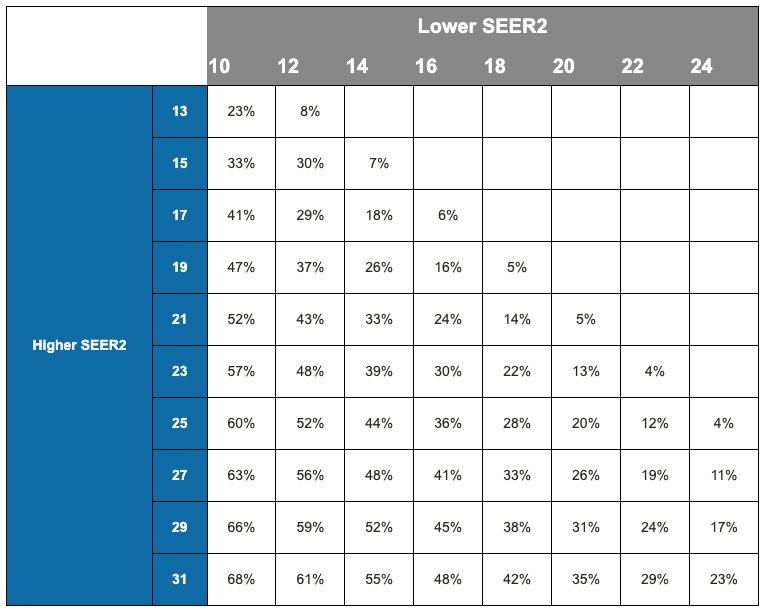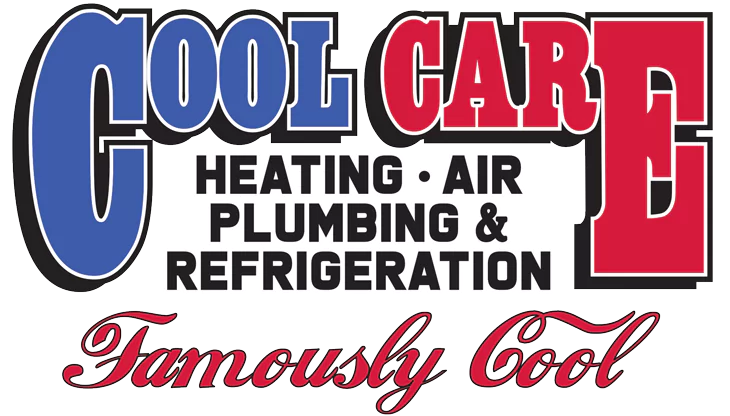Depending on your local climate, cooling your home in the spring and summer can get expensive. The same principle applies for using a heat pump during the colder seasons. Two ratings are used to measure air conditioning and heat pump efficiency – SEER2 and HSPF2.
2023 New Minimum Efficiency Requirements
Beginning on January 1st, 2023, the U.S. Department of Energy raised the minimum SEER, HSPF and EER requirements. To better reflect real world conditions, the new efficiency testing procedures increase the system’s external static pressure by a factor of five. The result is a new scale of efficiency measurement. SEER becomes SEER2. EER becomes EER2, and HSPF becomes HSPF2.
What is SEER2?
SEER2 stands for Seasonal Energy Efficiency Ratio and represents the amount of heat an air conditioner removes divided by the amount of electricity it uses. The more heat an air conditioning unit can remove per kilowatt used, the higher its SEER2 rating.
Important to note is that SEER2 is a seasonal ratio that measures efficiency only in warmer months. SEER2 ratings DO NOT apply to how the equipment performs in winter.
SEER2 Versus EER2
EER2 is used to compare units while keeping conditions constant. Because of the conditions typically used during testing, EER2 often reflects efficiency at peak use–although not necessarily extreme–and is lower than SEER2. Being seasonal, SEER2 is best for measuring efficiency in climates with a distinct warm season. EER2 is a better efficiency measure for air conditioners in more stable climates.
What is a Good SEER2 Rating?
Good SEER2 ratings will be above minimum efficiency levels set by the U.S. Department of Energy. For central air conditioners, a good SEER2 rating is 16 and above. For ductless mini split air conditioners, a good SEER2 rating is 20 or more.
Use the SEER2 rating chart below to find out the percentage of savings you will see by moving from a lower SEER2 piece of equipment to a higher SEER2.

What is an HSPF2 Rating?
HSPF2 stands for Heating Season Performance Factor and represents the amount of heat that a heat pump adds to a space relative to how much electricity it consumes. In that sense, HSPF2 is the opposite of SEER2. The more heat that a heat pump produces per kilowatt used, the higher its HSPF2.
What is a Good HSPF2 Rating?
An HSPF2 higher than 9 is considered good. If you live in a warmer climate and a heat pump will be your primary source of heating, then you should be fine with a lower HSPF2. On the other hand, if you live in a colder climate and will not be using your heat pump much, you should be fine with a higher HSPF2 since the unit will be working much harder.
Efficiency Matters
An important point to remember about efficiency is that, in an air conditioner, both the outdoor condenser coil and the indoor evaporator coil should be the same size and should have the same efficiency rating. If the indoor evaporator coil has a SEER2 of 17 but the outdoor coil has a SEER2 of 16, the whole system will have a SEER2 of only 16. Do not mix and match equipment because the efficiency rating is only as good as the weakest link in the system.
If it’s time for a replacement or upgrade to your HVAC unit, just give us a call at 803.772.7715! We can recommend the most energy efficient unit that will save you money on your monthly utilities.


